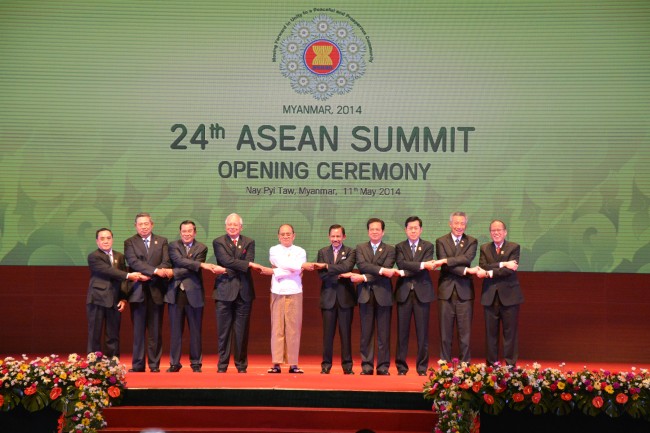JUST THREE months away from its target year 2015, the Association of Southeast Asian Nations (Asean) readies itself for the upcoming regional integration, which will ideally promote a free movement of labor and capital across all Asean member states.
The Asean is a political and economic entity that was founded on August 8, 1967 in Bangkok. The original five member states were Indonesia, Malaysia, Philippines, Singapore and Thailand. It has since grown to 10 member states and numerous observer states, including the United States and China.
The signing of the Asean Declaration, which states that its goals are to achieve regional stability, peace and economic growth through joint endeavors, marked the founding of Asean. In line with this goal, the Asean began to envision a unified political and economic union similar—albeit still distinct—to that of the European Union.
On the 30th anniversary of the Asean, the Asean Vision 2020 was put into action by leaders to foresee development among member states while “living in peace, stability and prosperity.” During the 2007 Asean summit held in Cebu, however, the Asean representatives decided to accelerate the planned regional integration from 2020 to 2015.
Rising underdogs
With a combined gross domestic product at $2.4 trillion in 2013, Asean would be considered the seventh largest economy in the world once integrated. In a keynote speech on Asean integration at Berlin last June 23, Stephen Groff, vice president of Asian Development Bank for Operations 2, predicted that the region could catapult to be the fourth largest by 2050.
According to economics senior Clifford Santos, vice president for Research & Development at the Ateneo Economics Association, the Asean Economic Community
(AEC) fills a role in boosting regional competitiveness and equitable economic development among member states.
The Asean website states that the AEC hopes to have “areas of cooperation [that] include human resources development and capacity building; recognition of professional qualifications; closer consultation on macroeconomic and financial policies; trade financing measures,” and other endeavors to create a more uniform economic system.
During the Asean Youth Dialogues last August 12, community building and multiculturalism were also highlighted as key aspects in uniting the nations. “The main goal is not integration but to build a cohesive community,” says Teresita Daza, executive director of the Department of Foreign Affairs Office of Asean Affairs.
Challenges ahead
Economics Department Chair Luis Dumlao, who has a doctorate in economics, says that a bigger market poses as a challenge and necessity, particularly for services. As an example, he cites that an individual from an Asean country could practice the same profession in another Asean country.
“When we open up our competition, the ultimate beneficiaries are consumers. With bigger competition, each [professional] is forced to do better service and better goods,” he adds.
According to Dumlao, “the agricultural sector is something that has been neglected, in terms of insurance from force majeure (superior force) [and] lack of support in terms of subsidizing farmers.” He observes marginalization among farmers, so concrete action must take place.
Santos also says that people from the business sector doubt the readiness of Philippine industries for the AEC, asserting that local businesses shall fade considering thenstronger competition. “The country must strive to live up to its commitment of accomplishing the integration-related measures and domestic structural preparation that would make itself ready for the AEC and for the benefits that such offers,” he adds.
Santos also says that there may be an unequal distribution of benefits from the AEC among the Asean member-states. He sees Singapore reaping the most while Vietnam reaping the least.
Is the Asean ready?
Many still doubt the Asean will be ready for integration by 2015. “I think that the region is not yet completely prepared for the economic integration,” says Santos. “There are still a lot of key measures across various AEC pillars that need to be initiated and accomplished. In fact, if we look at the data from the AEC Scorecard, we would see that, as of October 2012, only 74.5% of all preparation measures and targets have been achieved by the region,” he adds. The Scorecard evaluates AEC initiatives based on its progress, possible gaps and realization of goals by 2015.
Dumlao, however, believes that the changes to come are not as drastic as others believe. “The thing about this upcoming Asean 2015 is people think that there is going to be a big change but the reality is 2015 is already with us…It’s already there whatever it is, it’s not like it’s gonna change in 2015. Whatever is going to happen in 2015 is already happening,” Dumlao says.
What is generally agreed upon is that there is a lot of untapped potential for the Philippines to benefit from.
“The AEC may be beneficial to the region in terms of facilitating freer flow of skilled labor and capital, increasing regional economic competitiveness and promoting equitable development among others,” says Santos.
He adds, however, “At the end of the day, the impacts of the AEC on the region will only be apparent after 2015.”




